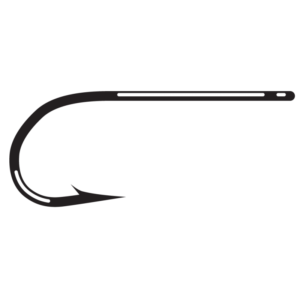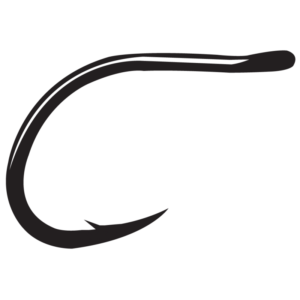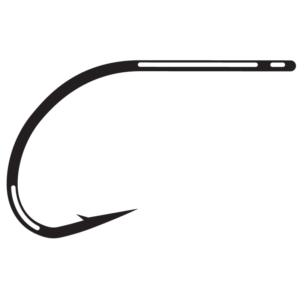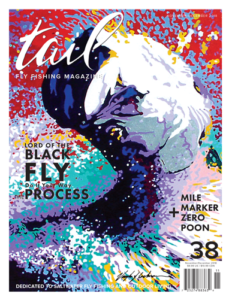By The Flyboss
(originally published in Tail #26 – November/December 2016)
All hooks have an eye, shank, gap, point, and (usually) a barb. Each component of a hook plays an important role in catching a fish but not all hooks are the same. With so many hook styles available, it can be a difficult task to sort through the noise. Many anglers eventually settle on a few styles that fit their fishing needs so this short tutorial may help you make your decisions.
For beginners, this will get you started off right and for you grizzled old goats, it will serve best as a quick refresher. Nonetheless, this is good intel when preparing for your next outing.
The Eye
The hook eye is the connection point to the tippet. Ringed eyes are the most common. The metal is bent in a uniform loop and the end sits flush against the shank. Braised, flattened, needle, looped and tapered are some other types of hook eyes but they tend to be used for specific applications. Looped are typically used for wet flies for salmon and steelhead. The others have no real consequence to us unless you are fishing blue water in which case a braised hook would be best. This is because it is a finished closed circle on the end of the hook and there are no edges to wear down your leader like on a ringed eye hook. The eye can bend up, be straight or bent down. Many question if the direction of the eye matters. Short answer is no, it does not. But there are two wide spread myths that exist to propagate the confusion.
Myth 1 – The direction of the hook eye affects the angle of pull on the fly and this angle will affect how well the fly hooks the fish.
Myth 2 – The direction of the hook eye affects the hooking gape. A down eye hook will have less hooking ability and should be avoided because it narrows the hooking gape.
Neither one of these are true. The reality is that despite the bend of the eye, the fly will move in a straight line in the direction it is being pulled. That being said, the start-up motion of the fly when pulled should theoretically swing the point of the hook downward and into the jaw of a fish. Because of this, we do use up-bent eyes for some topwater and mid-column flies but again, there is no evidence that this is accurate or factual. Why not give it a try though if there is no difference in fly presentation?



The Shank
The shank is the section from the eye to where the bend starts. Shanks come in short, medium or long and they are either straight or bent. The bent shank hooks are used in flats fishing particularly for bonefish though the only real advantage is a wider gap and different look to the fly. Short shanks are often used for finesse fishing when a compact hook and minimal weight are critical to presentation success. When we talk about presentation, we must point out that many tarpon flies are tied on short shank hooks with wide gaps. Medium shanks are the most common and can be used in almost every situation. They seem to be the general purpose hooks.
Long shanks are used to match a longer profile baitfish so most streamers and baitfish patterns use a long shank and are almost always straight.
The Gap
The gap is the size of the bend in a hook from the shank to its point. An average size gap will do in most situations but sometimes a wide gap is needed. A wide gap is used for tying flies that are bulky to ensure that the point the hook of will be exposed on the set. They are also used to ensure that there is a good hook set on blue water species like sailfish and marlin as well as flats species like tarpon, permit and bonefish. The wide gap is a bit more generous if you are setting the hook. This offers the angler a little bit more time and grab.
The Point
This is the tapered end of the hook and the sharp point that penetrates the mouth and jaw. Shapes include needle, knife edge, spear or rolled. Most common is the needle which is a tapered point. Somewhat popular are the cutting point hooks which have 3 or 4 sides instead of a taper. Cutting points are believed to be more damaging to fish and are not used as frequently as expected. With regard to points, there are two major types of hooks: chemically sharpened hooks and all the others. Chemically sharpened hooks utilize a chemical in the final step to remove microscopic burrs and roughness which cause friction and make the hook seem dull. If you look at a chemically sharpened hook under magnification it will be visibly smoother than a non-chemically sharpened hook. The cost for the chemical sharpening is steep in comparison to the other, but most anglers will notice a huge difference. If you can’t spend the money on the chemically sharpened hooks, buy yourself a file and hone those points. It really does matter.
The Barb
The barb holds the hook in place once it penetrates the jaw. The larger the barb, the more difficult it is for the fish to get the free. [or for the point to penetrate the fish’s mouth] Catch and release anglers pinch barbs with pliers for easy hook removal. You might lose a few fish but it is less damaging to the mouth area. We recommend barbless fishing except with billfish as you usually cannot afford to lose many, especially when fishing for striped marlin.
Hopefully this will improve, refresh or revitalize your fundamental knowledge of the tools you need to be successful. Tight lines until next time.
Subscribe to Tail – 6 Issues for $34.99



